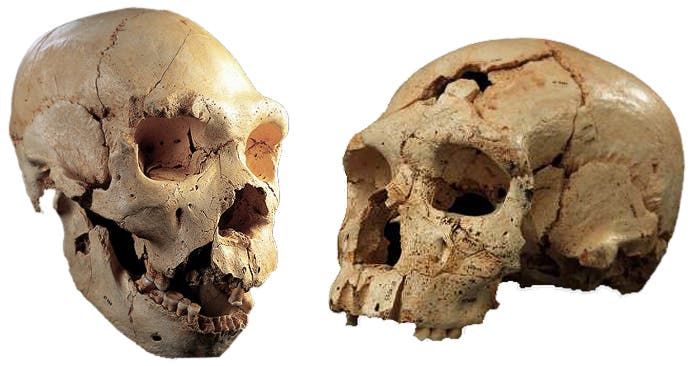
Credit: The Bradshaw Foundation
If you were to come face to face with a Neanderthal, as our human ancestors surely had more than 50,000 years ago, you’d be met by a familiar figure. For most intent and purposes, the two species resemble each other very closely. We used to breed with them, after all. Granted, there are some notable differences in physical appearance.
One notable characteristic of the Neanderthal is bulkiness. They had thicker bones, barrel chests, and shorter arms and legs. Concerning the face, Neanderthals had protruding facial features like jaws, noses, and the famous brows. They also had much larger eye sockets than humans.
More than anything, their huge eyes stood out. In 2013, a team of anthropologists from University of Oxford, UK claimed the Neanderthals’ big eyes were partly to blame for their demise which occurred some 40,000 years ago, after sharing Europe with humans for five to ten thousand years.
Because Neanderthals adapted to the Northern latitude climate where light is dimmer, they evolved larger eyes so the retina could gather more light and see better. Conversely, we humans who evolved in the land of sunshine that is Africa, had smaller eyes. The scientists led by Eiluned Pearce found that not only were the Neanderthals’ eyes bigger than ours, but also the brain’s visual cortex that’s in charge of processing all that information in what we familiarly call sight.
Here’s what they made of this: viewing the brain as a zero-sum game, having a larger part of the brain dedicated to processing visual information meant other regions of the brains were lacking. The theory goes that Neanderthals would have less brain power dedicated to solving complex problems and interactions like adapting to climate, new threats or, most importantly, congregating together in successful societies the way humans have. And their big eyes were all to blame.
Not so fast
Recently, researchers led by John Hawks of the University of Wisconsin-Madison published a new paper in the American Journal of Physical Anthropology in which they debunk Pearce’s theory. The team systematically analyzed 18 living primates then correlated the size of their eye sockets with the size of their social group. What they found was the exact opposite of what Pearce et al. suggested: the bigger the eyes, the bigger the social group.
“Big eyes actually indicate bigger social groups in other primates,” said Hawks to the BBC.
“If we could believe that logic, we would expect Neanderthals to be better social animals than we are today. Now, we don’t believe any of it: we actually think that eyes have nothing to do with social groups.”
Instead, if we’re to assess whether the Neanderthals were loners or formed successful communities or not we ought to look at archaeological records, Hawks said. Judging from tool use and the artifacts Neanderthals left, they were pretty successful social-wise. Moreover, Hawks stresses that big eyes enhance light sensitivity, but this ability doesn’t need more brain power.
If anything, those big Neanderthal eyes helped, not hindered their survivalbility.









